Bushfires in Our Biosphere
#BushfireRecoveryAU
In 2019 our region was severely impacted by bushfires with four major fires in a three month period: more than 7,000 hectares of land burnt and approximately 8,000 residents evacuated from their properties.
These bushfires were unprecedented and our region as a whole was not prepared. The Bushfires in Our Biosphere project has assisted in preparing youth with an increased understanding of fire behaviour in our community and provide perspective in relation to the local fauna and flora. It has also highlighted the importance of local Aboriginal knowledge of Caring for Country though fire. Through this important focus of the intricate relationships within local ecosystems and their need for management through fire and biodiversity enhancement students have gained valuable local insight. They have also had the opportunity to actively monitor and restore the site with weeding and planting.
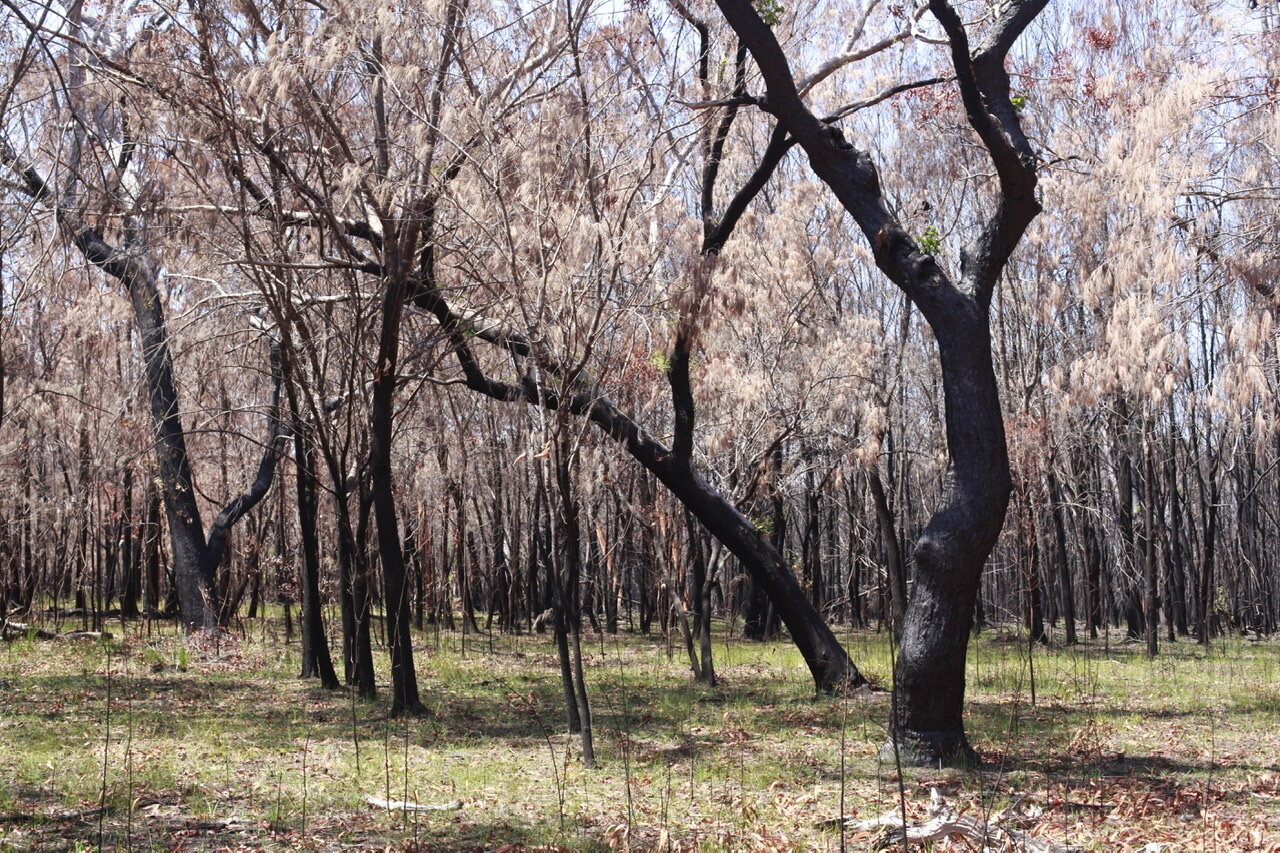
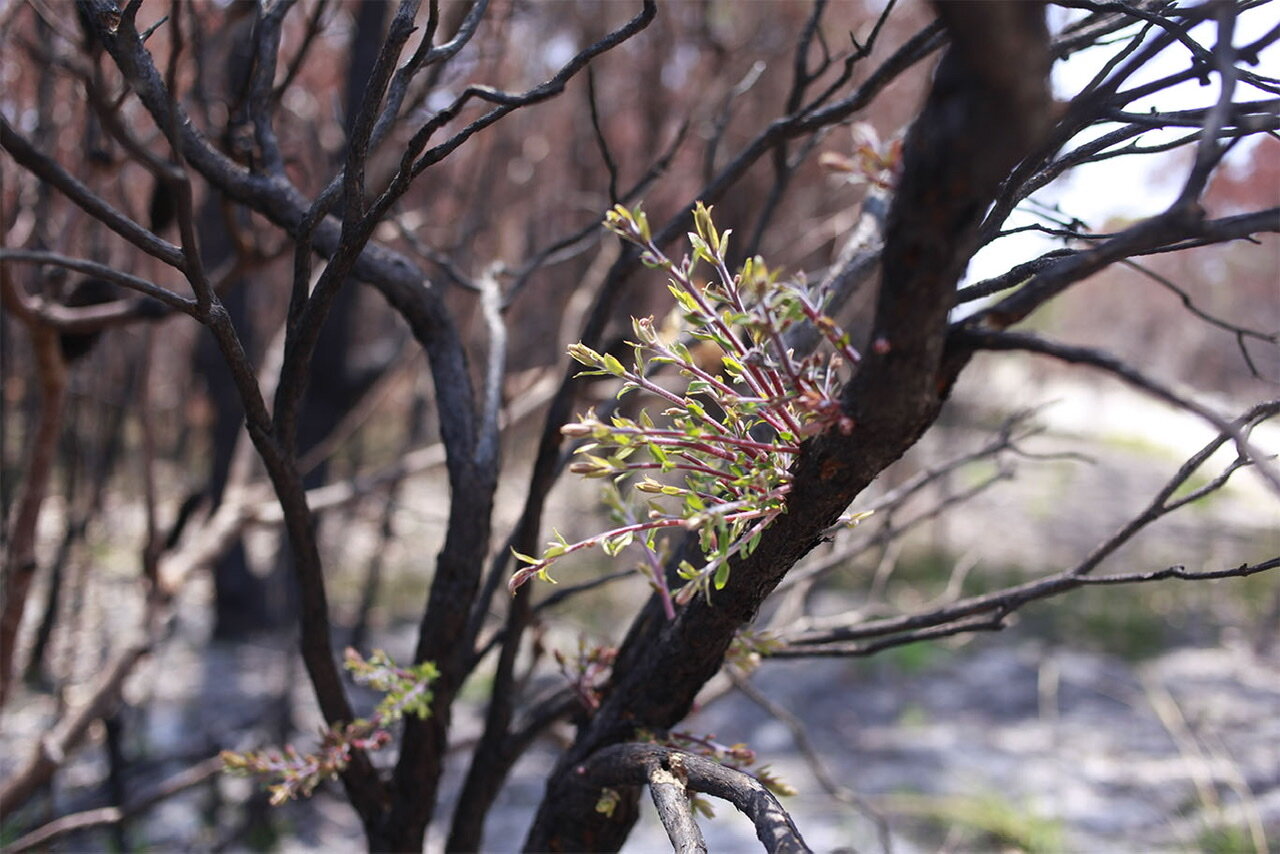
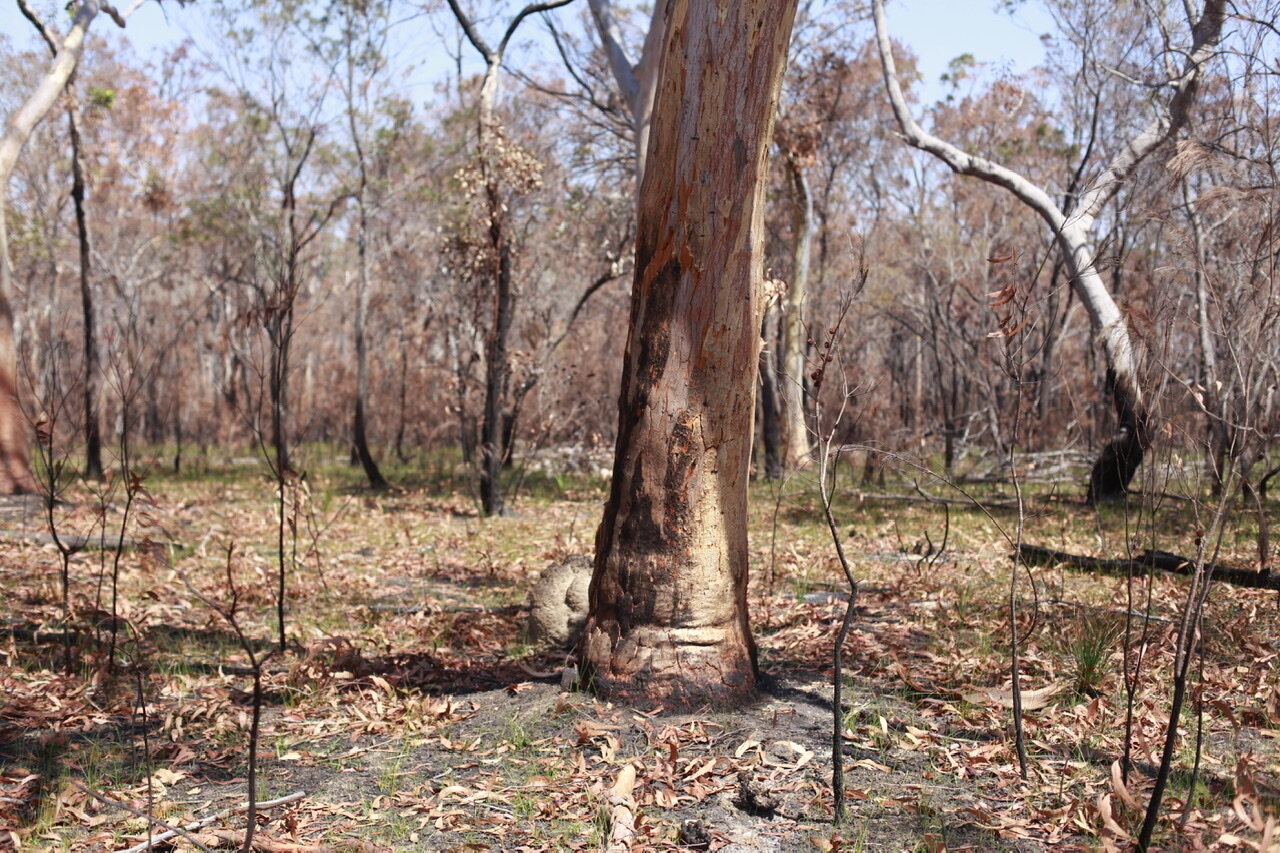
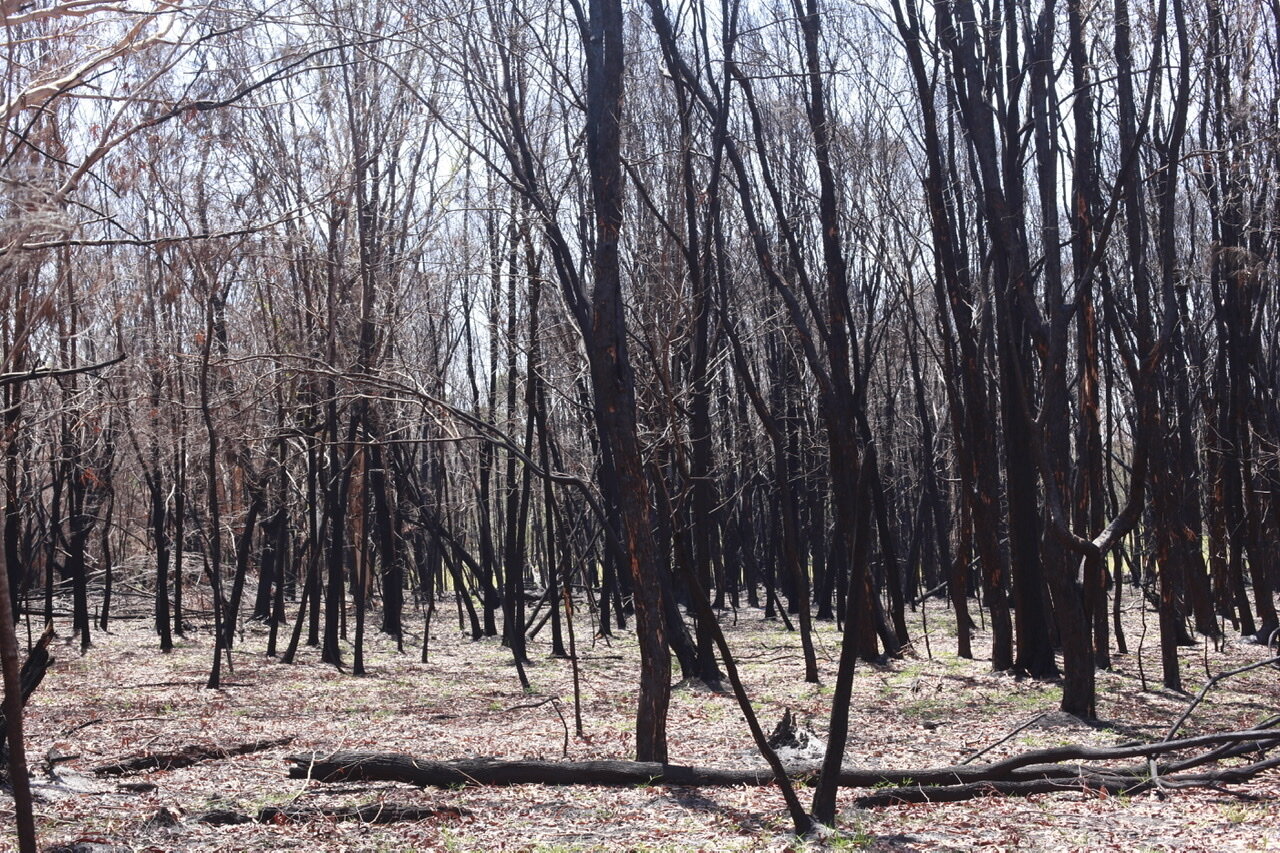
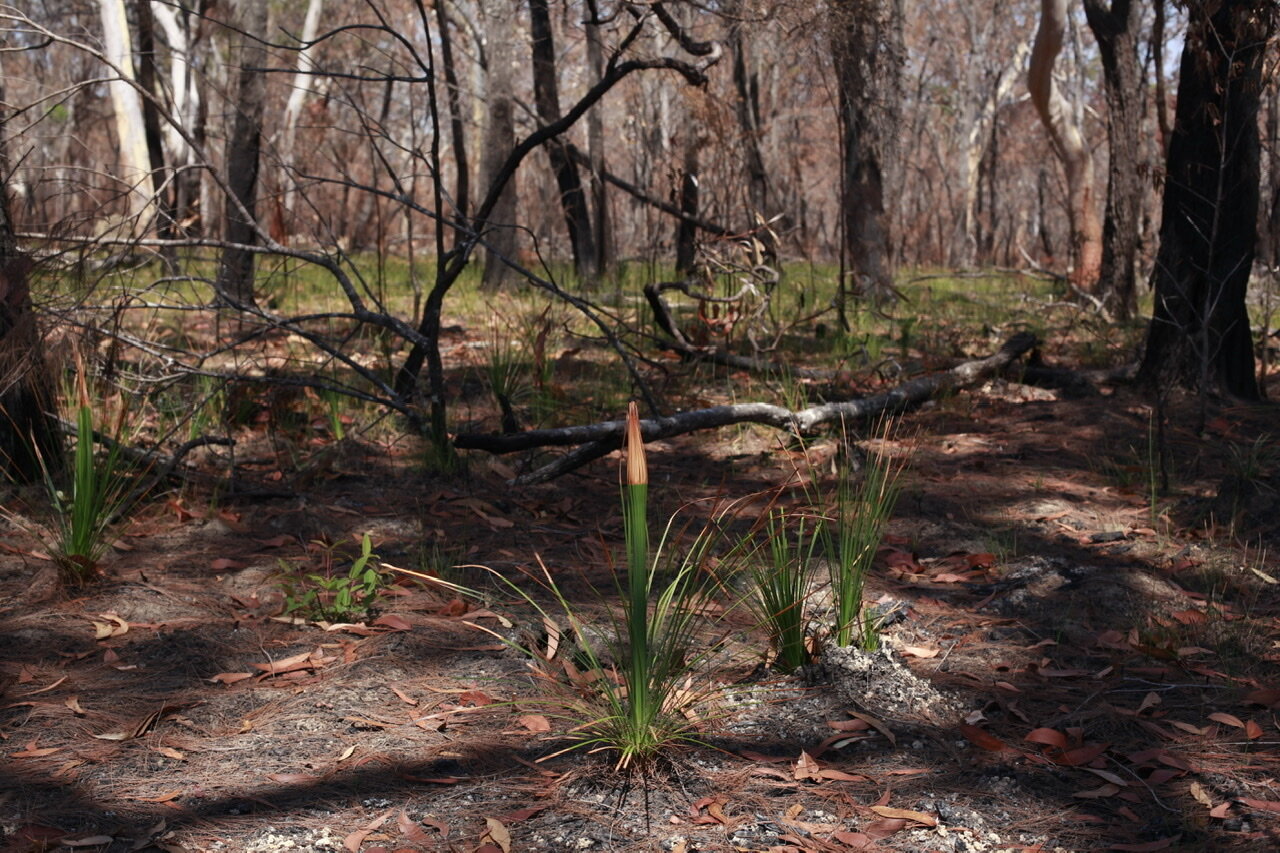
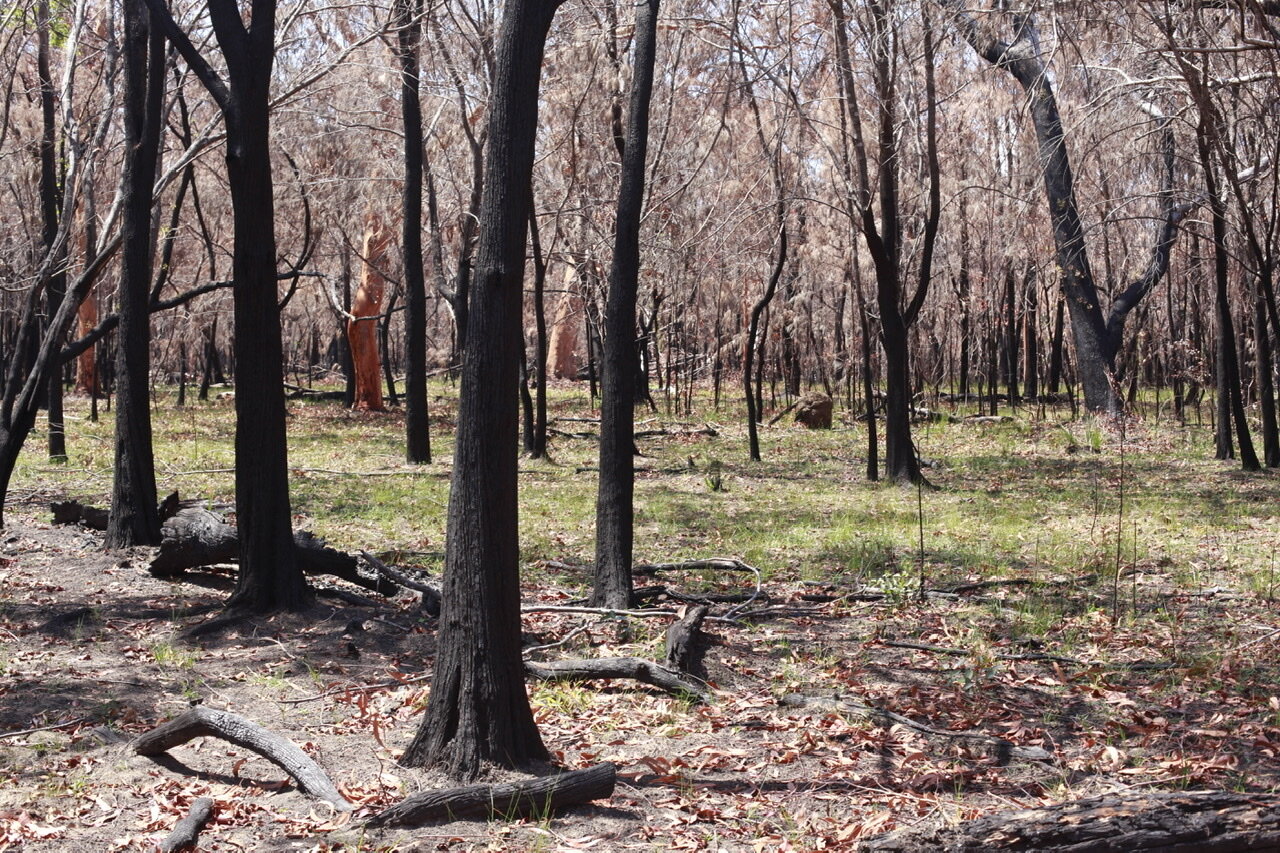

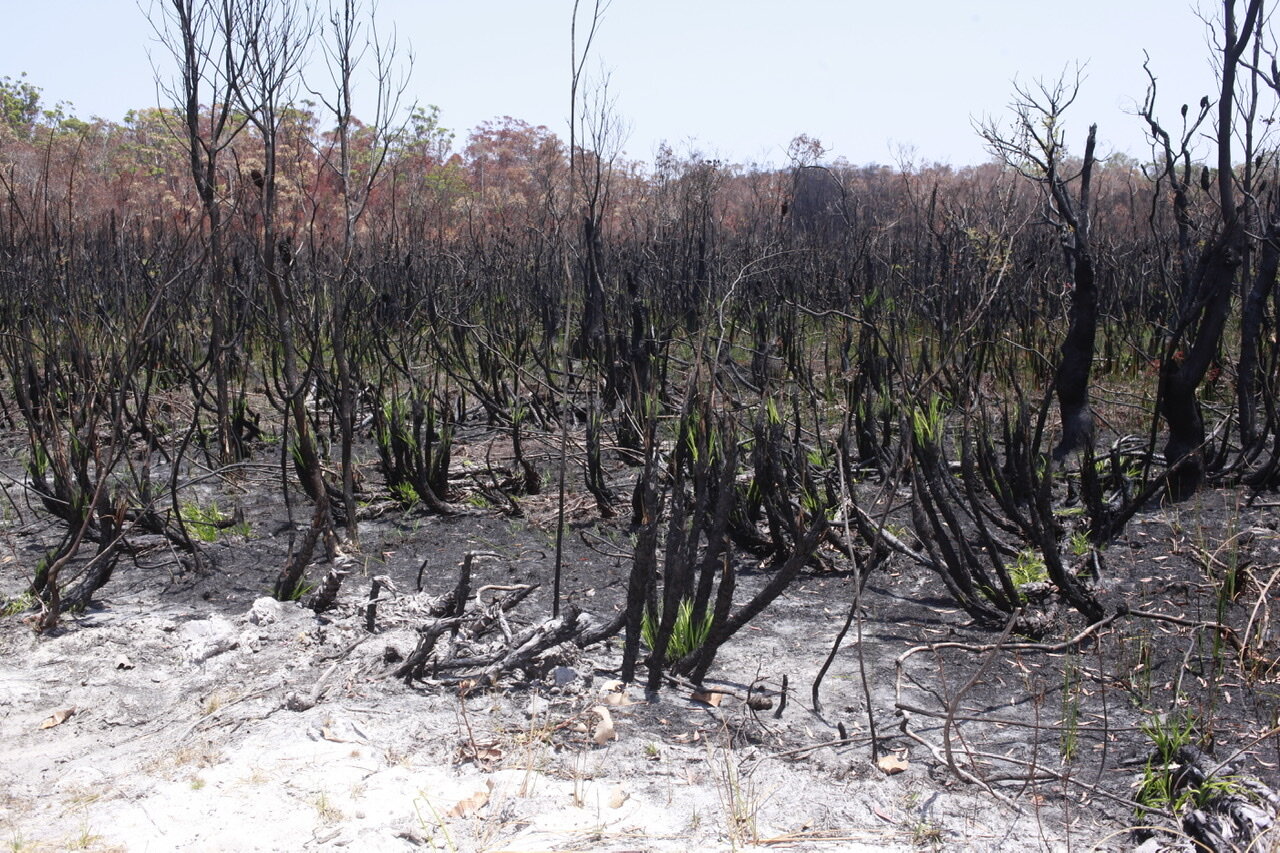
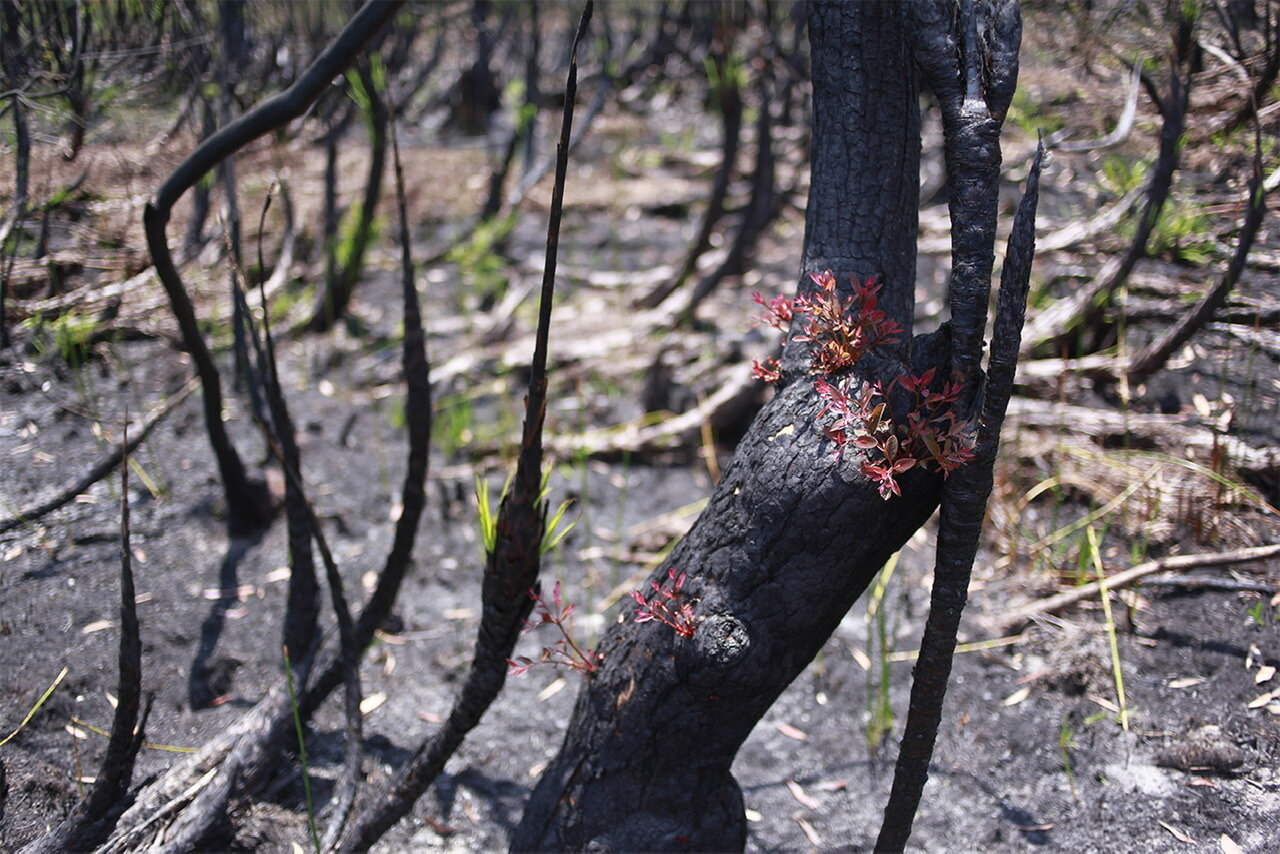
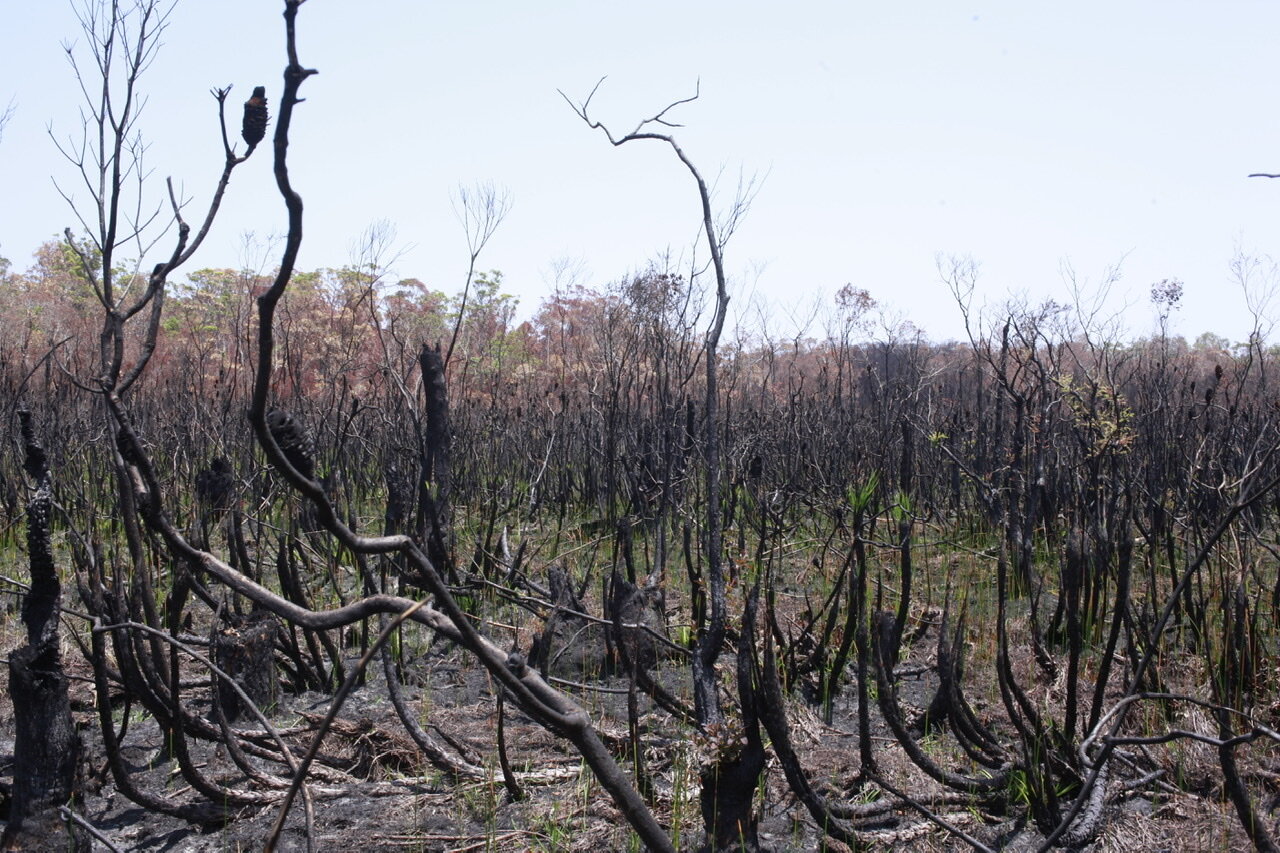
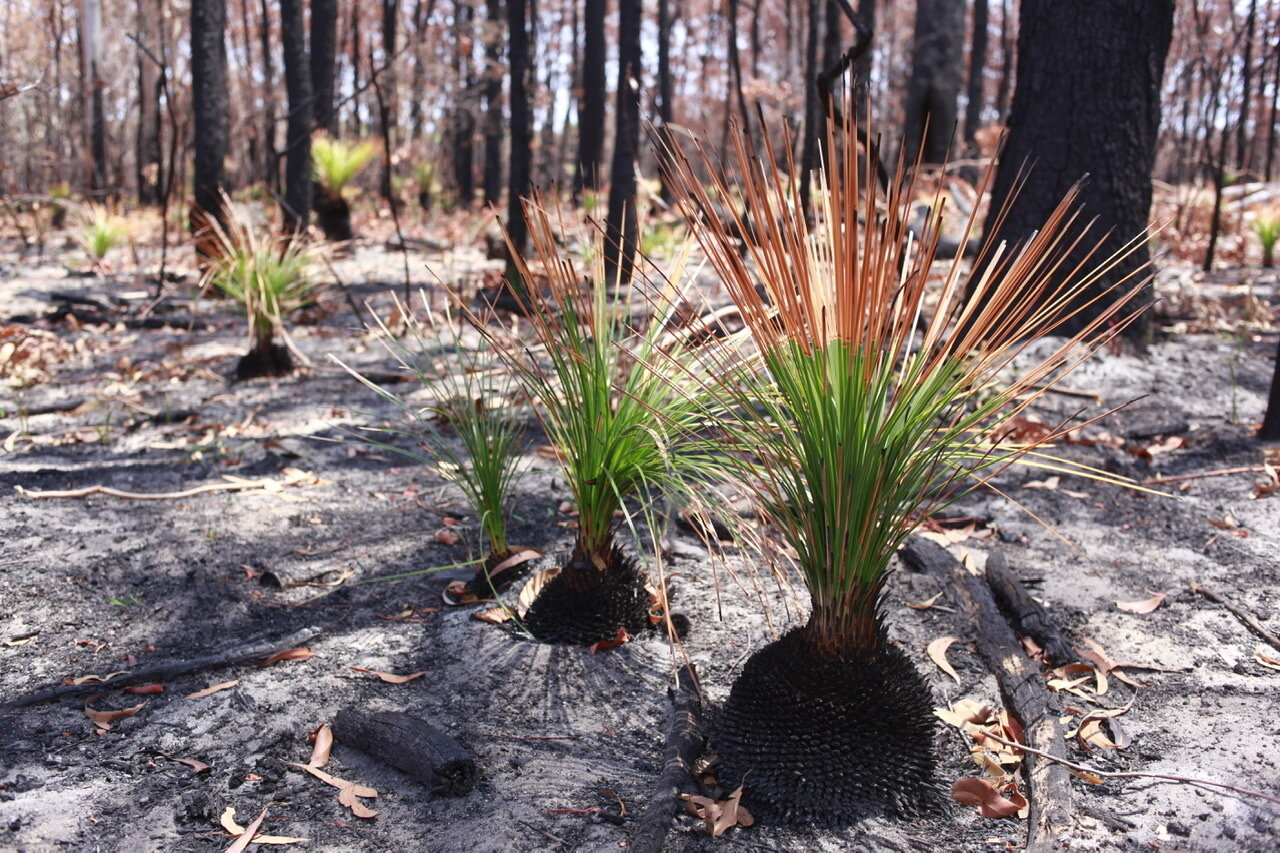
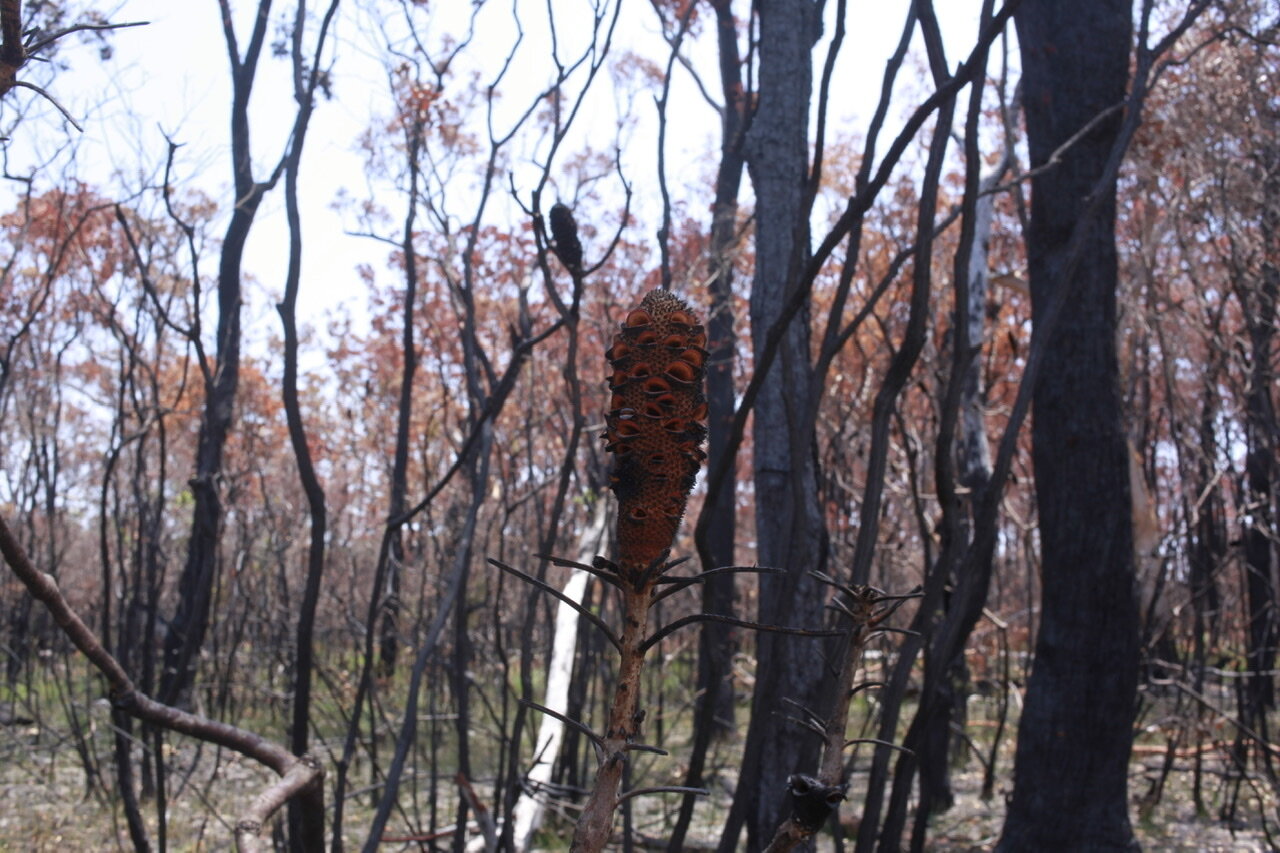
Photos by Annika Patrick capture the devastation of the bushfires of 2019, as well as the start of new life one month later.
Drone footage courtesy of Councillor Brian Stockwell. Shot one month after the fires in the Peregian Beach area.
Noosa EEHub has been working with students to monitor and restore biodiversity in Peregian Beach and Lake Cooroibah thanks to funding under the Bushfire Recovery Wildlife and Habitat Grant.
For over two years, the Noosa EEHub has worked with 1050+ students to develop their knowledge and understanding of bushfires in our community and its relation to the environment’s wellbeing. The students have developed a more extensive knowledge of local habitats, including identifying native or invasive species. This project included both in-class and on-site learning, which engaged students with the physical reality of climate change in our community, a fact further confronted after the floods in 2022 and the impact this had on the land. Students were able to distinguish the significance of managed and unmanaged land - how important native species are to the health of the environment and how they mostly need cool burn fires. The students’ work at each site has helped preserve native biodiversity in these areas, and remove invasive species.
For further information about each site, click on the images below!
Caring for Country with Fire
a discussion between Aboriginal Educators Victor Steffenson and Dr Beverly Hand
We were honoured to have hosted this important discussion in 2022 between Victor Steffenson Director Firesticks Alliance and author Fire Country (via ZOOM) and Dr Beverly Hand Kabi Kabi Educator (in person). They both provided their insights on land management through fire and the importance of all Australian’s Caring for Country. Future wildfires will be reduced if we better manage our region by restoring biodiversity, removing invasive weeds and applying the use of cool burn techniques to assist the regeneration of some regions. In fact cool burn techniques as taught by the Firesticks Alliance can be effectively used to manage weeds.
In 2020 the Noosa EEHub delivered a Pilot Bushfire program to students at Good Shepard Lutheran College. Students learnt about the traditional and current methods of fire management from guest speakers from The Queensland Fire Service and The Kabi Kabi people. Students were then given the opportunity to develop their own fire prevention plan or strategy to help us all be better prepared.
Watch the video to view the outcomes of this program. It was such a pleasure to work with these empowered and enthusiastic students wanting to make real change.
This project received grant funding from the Australian Government’s investment in bushfire recovery for wildlife and their habitats.





